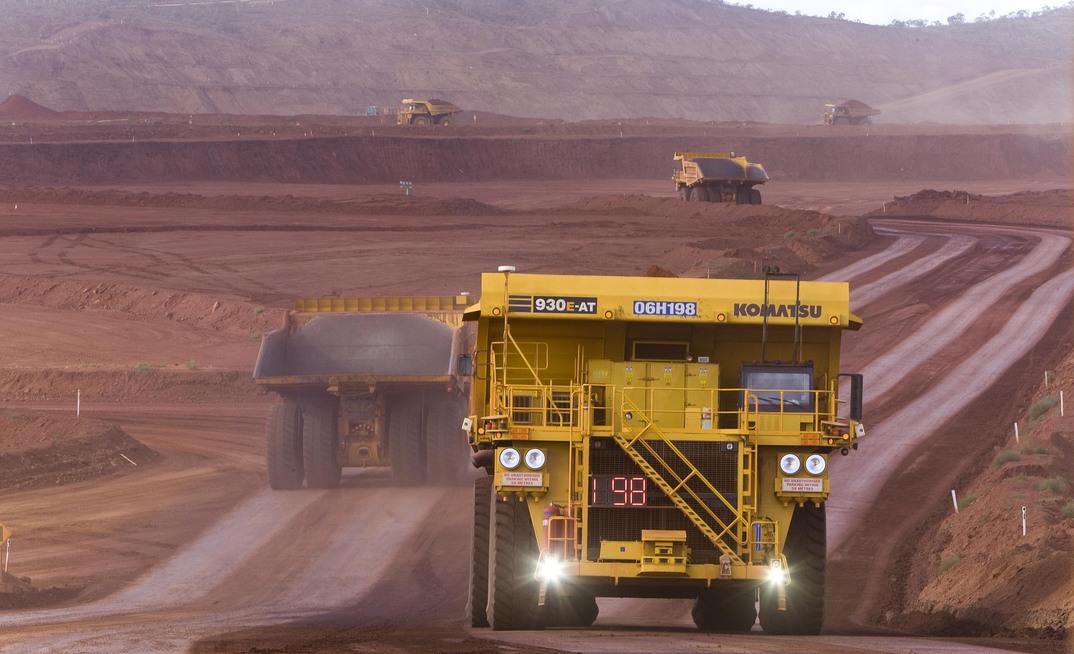Based on conventional large mining trucks, Komatsu’s FrontRunner trucks run completely autonomously – they are not remotely controlled – with a full truck fleet able to be monitored by single controller located up to thousands of kilometres away.
They are able to operate around-the-clock, 24 hours a day, seven days a week, delivering significant safety, productivity, reliability, performance and operational benefits to mine fleet owners.
Sean Taylor, managing director at Komatsu Australia, said: “The development programme for our autonomous trucks concepts goes back to the 1990s, so we’ve put many years of research and development into the safe, productive and reliable operation of autonomous trucks, both in Australia and around the world. No other manufacturer has our depth of experience, and successful production record in autonomous haulage.”
Taylor stated that Komatsu FrontRunner trucks are typically loaded by conventionally operated manned loading tools – such as shovels or front-end loaders – hauling either overburden to waste dumps or paddock dumps for spreading, or mined resources to the crusher area or stockpiles.
He explained: “Each truck incorporates a combination of vehicle controllers, precision GPS, an obstacle detection system (ODS) using radar and laser, and a wireless network system developed by Komatsu.”
The AHS central control system incorporates a detailed map of the mine area, including haul roads, loading areas, dump areas and refuelling and maintenance areas, and assigns required routes to each truck, whether overburden hauling or ore hauling.
Each loading tool is also fitted with high-precision GPS and an integrated touch-screen computer showing the location and direction of movement of all items of mobile plant within the FrontRunner fleet’s operations area.
As each truck approaches the loading area, the loading tool operator uses their on-board touch-screen computer to ‘spot’ the truck to the correct loading location, ‘telling’ the truck when it can move into position to be loaded, then once it is loaded that it can move off to the dump area.
In dumping, the autonomous system is able to handle the different requirements of the mine, depending on the material to be dumped, whether to fixed crusher plant locations for mined ore or to overburden waste dumps.
Taylor said that safety had been Komatsu’s first priority in developing the FrontRunner system. He added: “Each FrontRunner truck’s ODS can detect light mine vehicles and other mobile mine equipment – slowing or stopping the FrontRunner trucks when required. One of the biggest safety issues with dump truck operation is fatigue, particularly at night.
“Mine personnel have reported that they feel far safer and less stressed with FrontRunner trucks operating around them, because they know their movements are constant and predictable 100% of the time.”
Taylor said that operating a FrontRunner fleet also significantly changed the mix of personnel requirements to operate and control the trucks.
He noted: “Typically a Komatsu 930E truck in a 24/7 operation requires up to a total of five operators, to cover shift changes and FIFO work patterns, but with FrontRunner trucks, just a single controller per shift is required to supervise the entire truck fleet.
“On the other hand, autonomous truck operation requires significantly higher skills – and more people – to maintain and keep the system going, including specialists in electronics, GPS and control systems.”
Other advantages of Komatsu’s FrontRunner system include:
- More accurate component life prediction, because they are consistently driven to their optimum operating characteristics at all times;
- Reduced tyre wear, due to their constantly achieving their optimum travel speeds, acceleration, braking and steering requirements;
- Lower fuel consumption; and
- Increased productivity and production, through no need to stop for shift changes or crib breaks, longer periods between service requirements, and minimised unscheduled downtime.
























